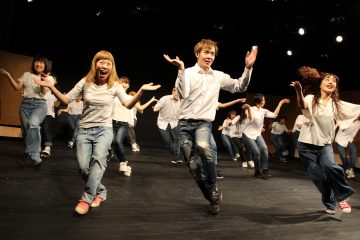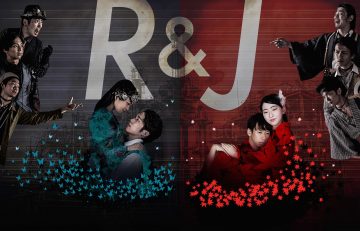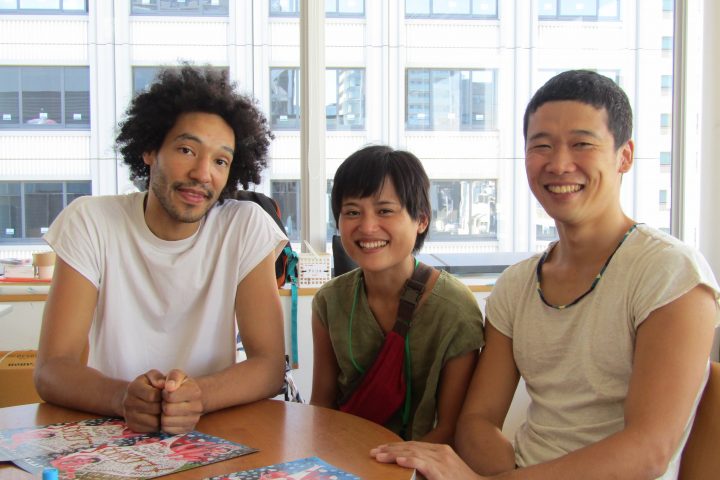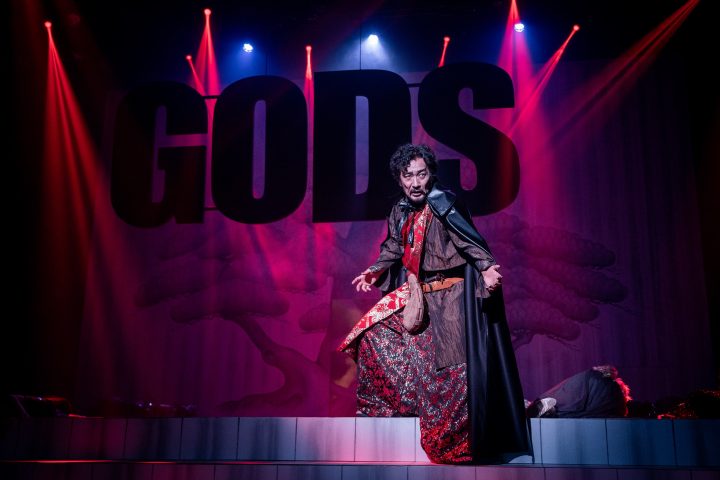Conversation: Naoki Ishikawa and Yudai Kamisato | What was seen inside and outside
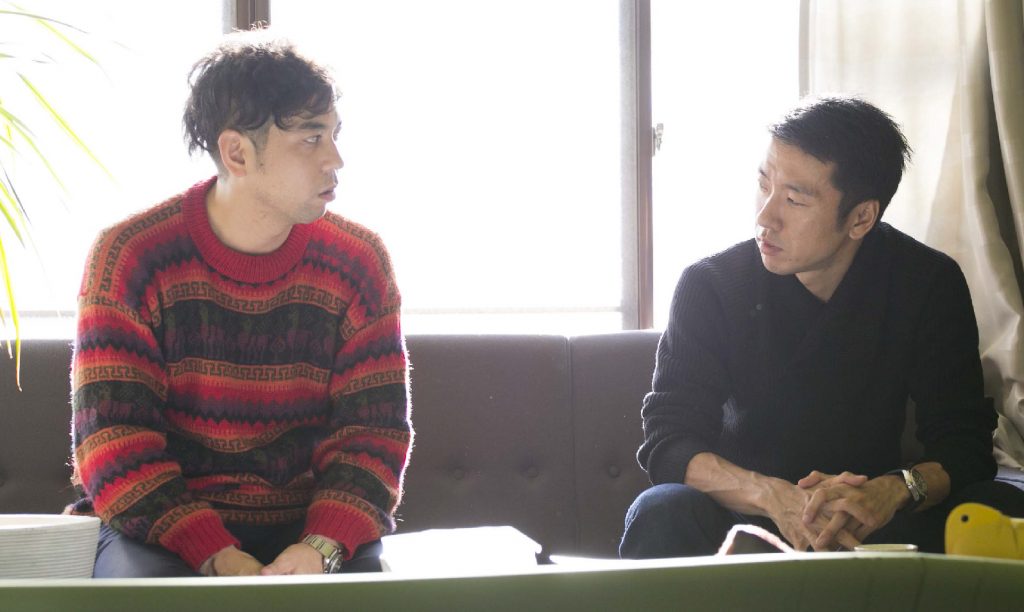
The play "Isla! Isla! Isla!" is set on a remote island in the middle of the ocean and depicts the rise and fall of a king who has washed ashore from the outside world and the kingdom he created. The creator of this small utopia, or perhaps a cloistered dystopia, is director and playwright Yudai Kamisato, who presides over the Okazaki Art Theatre. The original words he spins, who has multiple hometowns in Peru, Okinawa, and Hokkaido, often easily (and sometimes violently) transcend the fictional nature of the story, and convey to the audience the real feel of society, such as the humor of human existence and the significance of politics. We had the opportunity to hear about the new work, which has already begun a national tour and will be performed in Tokyo and Yokohama in January and February. We were also invited to the same table by Naoki Ishikawa, a world-traveling photographer whose photo exhibition "K2," held at CHANEL GINZA, was well-received as the culmination of a two-month challenge to reach the top of K2, the second most difficult mountain in the world. The two creators, who have had occasional contact over the past few years, talk about travel, islands, and society.
Interview&Text: Taisuke Shimanuki Photo(portrait): Masamasa Nishino
Accelerating from Peru
-The two of you have worked together on several interviews in the past.
Ishikawa : We talk at each other's exhibitions and performances. Also, I had Kamisato-kun perform a short new work with two actors. During a talk event at VACANT in Harajuku.
Kamisato : It was the end of 2013, before I went to Peru.
Ishikawa : That's right. On the other hand, I had just returned from Peru. Kamisato-kun was born in Peru, but he hadn't been back there for over 20 years, so he reminisced about his grandmother and told me stories. After that, he actually went there.
Kamisato : I stayed at my grandmother's house in Lima for about a month and a half, and spent a lot of time in and out of the Japanese community.
Ishikawa : What was your reason for going there in the first place? To visit your roots?
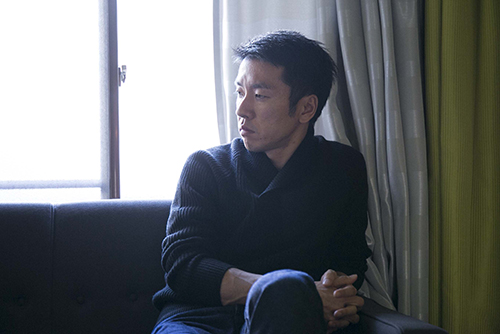
Kamisato : My grandmother is almost 90 years old. My father makes occasional visits to his hometown, but I never go there, because I thought he would want to see his grandchildren. When I actually went there, it was tough for me for about the first half month. The area is so unsafe that taxi robbers are common, so my grandmother gets very worried if I go out alone. I can only go out when a relative takes me out, and my grandmother and I watch NHK on satellite TV and eat Japanese food, and I'm like, "Where am I?". But I gradually got used to it and was able to walk around the neighborhood and ride the bus, and I started to feel more at ease.
Ishikawa : It must be hard for you, Kamizato, because you're quite shy.
Kamisato : That's right (laughs). But if I acted intimidated, no one would take me seriously, so I gradually became more bold and went to Machu Picchu by myself, and even traveled to Argentina. I feel like I gained a sense of agility that I had never had before in my overseas experiences.
Ishikawa : You said that after that, you started traveling to different places at an accelerated pace. It's a surprising change from the image of you three years ago, when you hadn't even been back to Peru.
Kamisato : I didn't even leave the Kanto region in my 20s (laughs). I feel like my sense of language has really expanded, and although I didn't study it in particular, my English has gotten better since I went to Peru. It's pretty scary before you jump, like when you're diving in swimming. But once you jump, you think, "Oh, I can do it," and the next time it feels pretty easy. I think that's what it feels like.
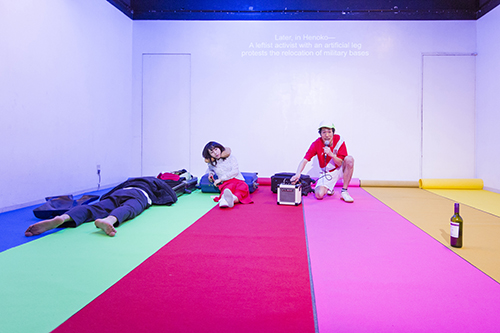
Okazaki Art Theatre "+51 Aviacion, San Borja" Photo: Yuta Fukitsuka
Ishikawa : First, I want to ask you about that change. I haven't seen your previous film, "+51 Aviación, San Borja," but this time, "Isla! Isla! Isla!", is also a work that you made while connecting with the island and your own roots.
Kamisato : That's right. My father's family is from Peru and Okinawa, and after Peru I also did some research in Okinawa. But the direct reference for "Isla..." is Chichijima in the Ogasawara Islands.
Ishikawa : I've been to Chichijima before. The first time I went was when I was in high school, and I practiced skin diving and swam with dolphins. Ogasawara is really interesting.
Kamisato : Chichijima has a different kind of closed-off feeling to Okinawa. The main island of Okinawa is crowded, and at first glance Naha looks no different from any city on the mainland, but Chichijima is completely different, it feels like an "isolated island."
Reasons for interest in islands
- I've never actually been to the Ogasawara Islands, so this is just my knowledge, but the Ogasawara Islands are a group of islands with a heterogeneous history. The name Ogasawara was given to them during the Edo period, but even during the period of national isolation, Westerners came and went, and the islands were under American occupation from the end of the Pacific War until 1968. People with diverse roots, including Western-Japanese people, live here, and I hear that the Ogasawara dialect, a mix of multiple languages, remains to this day. What kind of atmosphere does it have?
Ishikawa : It's really unique. Because there is no deep-rooted ancient culture, they are trying to incorporate hula dancing and building new shrines. It's a very mixed-up island, Japan but not Japan, it has some American elements but it's not America, it's on the river from Micronesia but it's not Micronesia. The pronunciation of Bonin Island in English is also interesting.
-The name Bonin Islands is said to come from the name for uninhabited islands, called "Buninjima" in the Edo period.
Kamisato : There is a bar called Yankee Town, where locals gather. There I became friends with Junee, a direct descendant of the first immigrant, Nathaniel Sabore. He told me stories about wartime bomb shelters and crashed fighter planes, and took me to many places.
Ishikawa : I've been to Yankee Town before. How long did you stay on the island?
Kamisato : Exactly two weeks. I stayed in a trailer house near the port area of Omura. At first, it was hot and I didn't know anyone, so it was a bit tough (laughs). At first, there was no excitement in Yankee Town either. But then someone named Lance, who had joined the U.S. military, happened to be training near the town in Oklahoma where I studied abroad, and things got exciting, and that was the turning point.
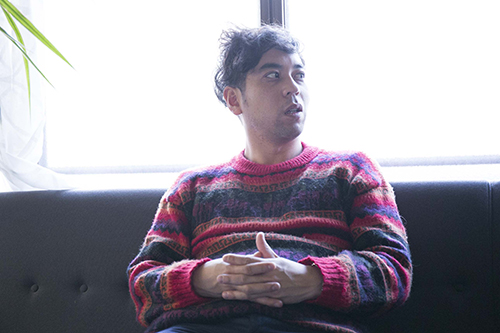
-Do you think the characteristics of the Ogasawara region are reflected in "Isla...", which is set on an island?
Kamisato : I think the content of the play is something that can be written through prior research, but the texture of the words that are spoken there was acquired through research, and that is reflected in the directing. Although I say research, in reality I just spend the whole time drinking (laughs).
Ishikawa : To put it simply, what is the story about?
Kamisato : The king who washed up on the island from outside made the indigenous people of the island into soldiers and gave a speech. In the speech, he talked about how the country was formed, war broke out, rulers changed...
Ishikawa : I think the title "Isla! Isla! Isla!" means "Island! Island! Island!" but what language does it come from?
Kamisato : It's Spanish. There's an island in Mexico called Isla Mujeres. Isla means "island" and Mujeres means "woman." It's called the "Island of Women," but at first I misunderstood it to be Isla Mujeres, an island related to Islam or something (laughs). From that point on, I thought the sound of "Isla" was nice.

From the Kyoto performance of Okazaki Art Theatre's "Isla! Isla! Isla!" Photo: Takuya Matsumi
-What is the reason you are interested in islands?
Kamisato : I wonder why. Each island has its own cultural logic, and each one is like a small country. I think it's mostly a personal preference, that I feel comfortable when I can get into that logic. That was also a big reason why I went to Chichijima.
Ishikawa : There is no definite center, but each part is independent and yet connected by an organic network. That's what's interesting about archipelagos.
-For your photo book "ARCHIPELAGO," you photographed archipelagos and islands such as the Tokara Islands and the Queen Charlotte Islands.
Ishikawa : Yes. Islands are completely different from continents. Kunio Yanagita wrote, very roughly, that islands are mountains and mountains are like islands. That's right, islands are mountains that jut out from the sea. I really like this idea that islands are mountains and mountains are like islands. When you make the sea around the Seto Inland Sea transparent, you can see the mountains poking out, which is connected to the scenery around Kagawa. If you think of islands as standing tall in a larger organic network, rather than existing in relation to a distant center, I think it will change the way you see the world. Islands have a strange power that doesn't converge or attract to larger things, and I find that very interesting.

"ARCHIPELAGO" Shueisha / November 2009
The relationship between seeing and being seen
Kamisato : I understand what you mean about "mountains being islands." To digress a little, I recently had a discussion with architect Kyohei Sakaguchi about "Isla...". What I felt was that Sakaguchi is truly the man behind the scenes.
Ishikawa : What does "the person inside" mean?
Kamisato : I think I'm someone who looks at things from the outside. I'm the one who's messing around when I'm not the person involved. But I feel like Sakaguchi is like a con man who is involved (laughs).
Ishikawa : Well, that's true (laughs).
- Mr. Sakaguchi, you are engaged in various activities based on the idea of creating an independent state in Kumamoto. While you are a party involved in the situation from the inside, you also have a fascinating side as a trickster.
Ishikawa : I am also a born traveller, so I think of myself as an outsider at heart. I am always a foreigner, and I enter a place as a stranger, first and foremost.
Kamisato : In recent years, I've become less of a person who sets up an atelier or a base, and I think that the organization I preside over, "Okazaki Art Theatre," is now fictitious. Even Mr. Ishikawa is someone who doesn't know where he is usually. Do you have any plans to set up a base?
Ishikawa : I don't think so. Of course, I want to have a deep relationship with the place I've decided on, but that doesn't mean I want to move there or settle there. For example, islands have always been seen from larger places, and are easily defined by the gaze of a central place, so to speak. It's easy to create a stereotype that southern islands = beautiful seas and blue skies. That's a completely central perspective, isn't it? But if you stay on an island for a long time and look from the island, the world looks different. When you see something big from a small place, you discover new things and are surprised, and the known world is turned upside down. To the island and from the island, thinking between both positions, continuing to look and look and look, that may be who I am as a traveler.
Kamisato : Although it's not an island, Mr. Ishikawa has climbed K2 and taken photos. He has a solo exhibition in Ginza ("Naoki Ishikawa Photo Exhibition K2" held at Chanel Nexus Hall until December 27th), but which is more important: taking photos or climbing mountains?

"The Himalayas by Naoki Ishikawa" (published by TOO MUCH Magazine)
Starting with Everest in 2011 and concluding with K2 in the summer of 2015, Naoki Ishikawa's complete record of his five-year Himalayan expedition has been compiled into one special issue of TOO MUCH Magazine.
[B5 version / 228 pages / 2,160 yen]
http://www.toomuchmagazine.com/
Ishikawa : Photography. Because if I didn't have a camera, there would be no need to climb the mountain. If I couldn't take photos, I wouldn't climb the mountain.
- The idea that your perspective changes when you get a view from a small place is something that is accentuated by the act of photography, which presents a certain perspective through the camera?
Ishikawa : I am very conscious of "seeing/being seen." The profession of a photographer is all about "seeing," but there is also an element of scooping up the light that is visible after continuing to look. On the other hand, while looking, I am also a being that is seen. It's the same wherever I travel, but just being aware that I am not just "seeing," but being "watched" by something bigger changes my photographs a little. It's the same with portraits. I take a photograph while looking at the person, but they are looking at me. A "gaze" is something that is seen precisely because it is being looked at. I think that it is in this narrow space between "seeing" and "being seen" that I continue traveling and taking photographs.
Kamisato : What I think about the relationship between "seeing" and "being seen" is the change in the subject. When your subjectivity turns to objectivity and the center of the relationship starts to shift, the emotions that should belong to the individual become less personal. Living in a city like Tokyo and doing theater, I feel that emotions are supreme, that emotions are overly valued. I often think about emotions through actors, but I come to the conclusion that "emotions don't matter." In other words, it's the audience who "see" that has emotions, and the emotions of the actor who is "seen" don't matter. It's fine to be passive.
A bird's-eye view/sense of ownership
- Your latest work, "Isla...", is a chronicle depicting the rise and fall of an island. I think it's a story told from an outside perspective, but I feel there's a vector that tries to move away from a subjective narration. But at the same time, I felt that a certain narrative device related to the narrator breathes life into the story with a different logic that goes beyond detachment.
Kamisato : That idea is about a subjective perspective, but I feel like I've entered a mode where I'm looking at things from a more bird's-eye view.
Ishikawa : Does the "island" have any character-like emotions?
Kamisato : I think they have personalities. They can get happy or angry, but they almost never get sad.
-It's truly passive in the sense that joy, anger, sadness, and happiness don't have a direct effect on it.
Kamisato : I guess so. As I continued writing the play, I found myself thinking, "Huh? Whose lines are these?" At first, I was writing it based on the story of "Adventure Dankichi" (a popular manga serialized by Shimada Keizo from 1933 to 1939, depicting the exploits of a boy who becomes king of a southern island), but gradually it became less about human beings.
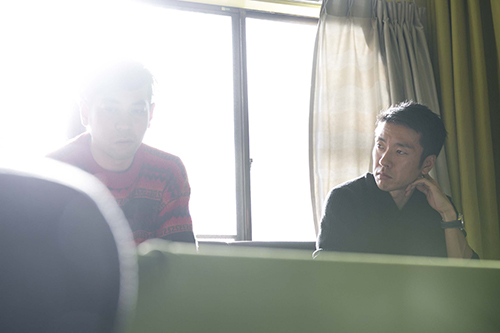
-You once said in an interview that you weren't doing theater, but were instead dealing with politics. Do you think that this is also related to the change in your work?
Kamisato : I thought saying "It's not theater, it's politics" sounded catchy at the time, but I got quite angry (laughs). A lot of people said to me, "It's theater, isn't it?" and I felt like saying sorry.
Ishikawa : I see (laughs).
Kamisato : When you go abroad for a long period of time or away from where you normally live, what happens in Japan starts to seem like someone else's problem. When I went to Peru, I think the LDP was doing something again, and I didn't get it at all. The thing that hit me the most was the ghostwriter scandal surrounding Samuragochi Mamoru.
Ishikawa : You're talking about fakes (laughs).
Kamisato : I thought it was interesting, but I really began to lose track of the scale of politics. I kept thinking about why I was no longer able to feel a sense of involvement in the politics in the literal sense.
Ishikawa : That's the reaction of a normal, honest, decent person. In 2000, I traveled across the globe from the North Pole to the South Pole, and the Japanese news that shocked me the most at the time was the marriage of Takanohana and Rie Miyazawa (laughs). If something has even a slight connection to my territory, or if it involves places I've been to or people I've met before, I start to feel more and more involved.
Kamisato : When I look at social media, I see people attacking each other or anyone else by saying things that sound plausible, like right or left. I know I shouldn't look at it, but I have a bias that says you can't say anything unless you're the person involved, and I feel like I'm pointless because I can't get away from it.
-This is my personal opinion, but I don't think thinking about politics necessarily means expressing your opinion on social media or retweeting an article. In the world of Japanese art, I think that in recent years, a considerable number of works have appeared that deal with hot social and political issues for the sake of a theme, but if the role of art is to focus on the universality and history of humanity, I think it is not realistic unless the default perspective is a broader one that includes popular and secular things. In that sense, I think Kamisato's sensibility is quite reasonable.
Kamisato : I'm feeling really uneasy because I've been told "just" a lot today... (laughs bitterly). This is a really common thing to say, but I don't think that each person's beliefs and their correctness, or the act of spreading attacks on others, are political. If I want to deal with politics and not theater, I think that means I want to present a politics that is different from what I just said.
Naoki Ishikawa Photo Exhibition "K2"
Naoki Ishikawa Photo Exhibition “K2”
December 5th (Sat) - 27th (Sun) 2015 12:00-20:00
Venue: CHANEL NEXUS HALL
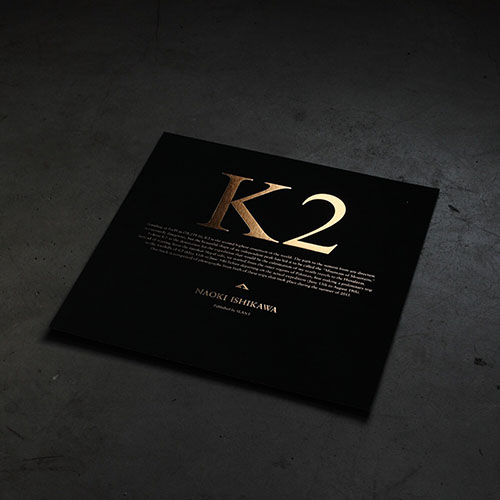
Photo book "K2" (published by SLANT)
This book is a condensed version of the expedition to K2 (8,611m), the second highest peak in the world. This is the fifth in the Himalayan photobook series.
[H280mm×W300mm / 78 pages / Hardcover / 3,700 yen + tax]
http://slant.jp/k2/
Naoki Ishikawa
Born in Tokyo in 1977. Photographer. Graduated from the Doctoral Program in Fine Arts at Tokyo University of the Arts. Interested in fields such as anthropology and folklore, he travels to all kinds of places from remote areas to cities and continues to exhibit his work. He received the Newcomer Award from the Photographic Society of Japan and the Kodansha Publishing Culture Award for "NEW DIMENSION" (Akaaka Art Publishing) and "POLAR" (Little More). He received the Domon Ken Award for "CORONA" (Seidosha). His many publications include "The Last Adventurer" (Shueisha), which won the Kaiko Takeshi Non-Fiction Award. Recently, he has published five consecutive photobook series focusing on the 8,000m peaks of the Himalayas: "Lhotse," "Qomolangma," "Manaslu," "Makalu," and "K2" (SLANT). His latest works include the photobooks "Kunisaki Peninsula," "Kami," "Lagoon and Satoyama" (Seidosha), and "SAKHALIN" (Amana).
Yudai Kamisato
Born in Lima, Peru in 1982. Director, writer, and head of Okazaki Art Theatre. His father is a Peruvian immigrant from Okinawa. Born in Peru and raised in Kawasaki, Kamisato's directing works, in both color and language, combine the image of the scorching South American sun with the inorganic and nervous nature of new towns. In 2006, he won the Toga Director's Competition Best Director Award for "Desire Caught by the Tail" (written by Pablo Picasso). "Mr. Haircut" (2009) and "Black Coffee (for Those Who Can't Drink)" (2013) were both nominated as finalists for the Kishida Kunio Drama Award. He also made his debut as a novelist with "Exiled Baseball Player" (published in the June 2013 issue of "Shincho").
